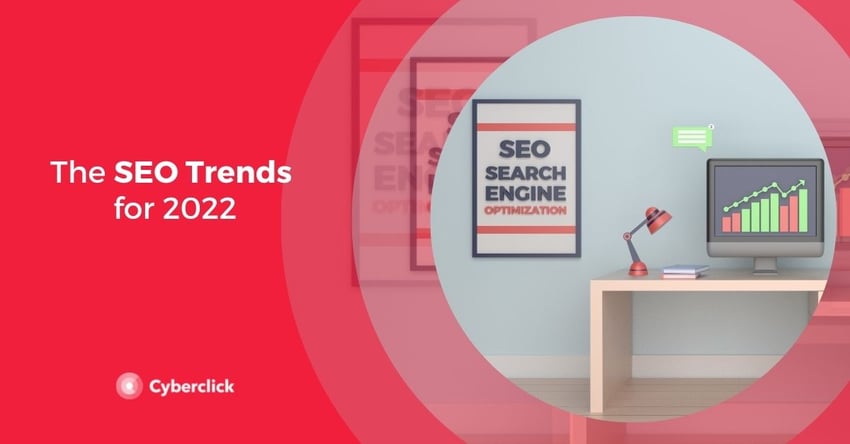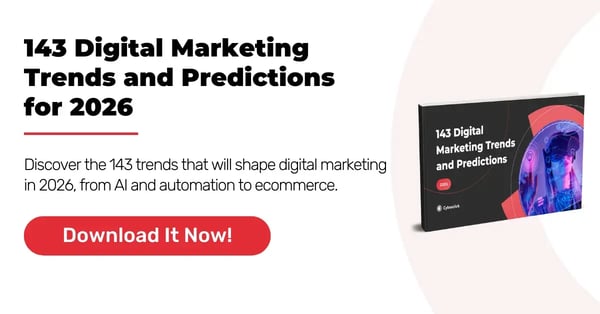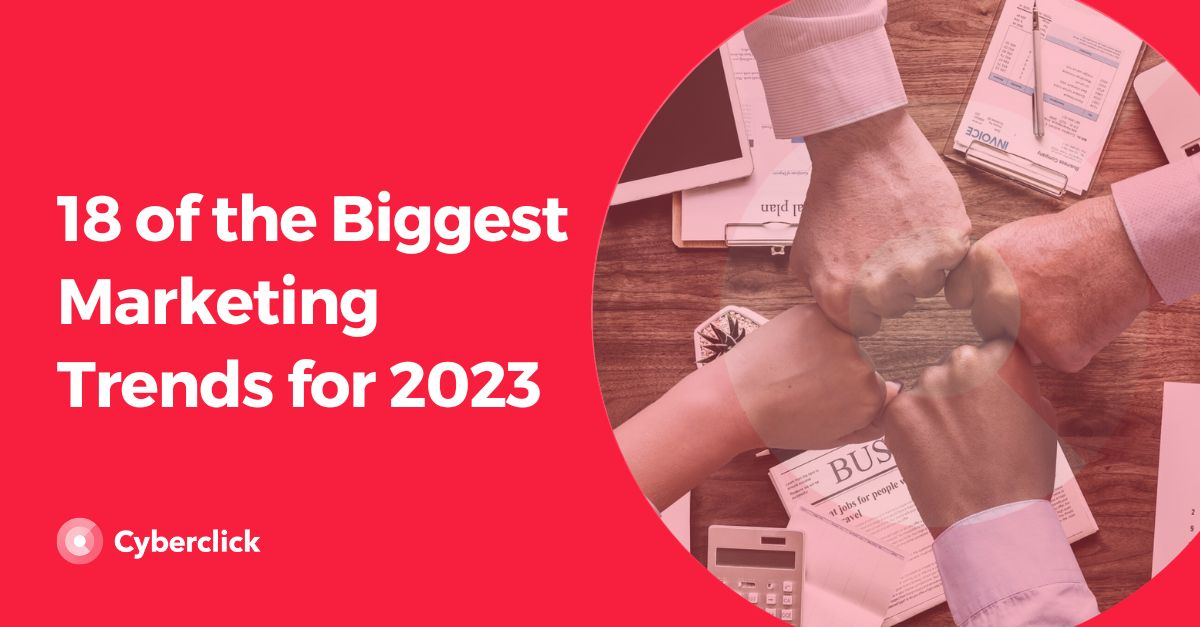For marketers, keeping up with digital marketing trends is absolutely critical, and SEO is no exception.
The landscape has changed dramatically over the last few years. New algorithms have emerged around artificial intelligence, voice search, and more. The world of SEO keeps changing, so you have to be able to adapt in order to stay relevant. In this article, we are going to give you an overview of the SEO trends you can't miss in 2022.


12 SEO Trends for 2022
1. Artificially Intelligent Algorithms
In 2022, we believe that RankBrain, Google's artificial intelligence algorithm, will be one of the most important factors in deciding a website's ranking in the SERPs.
Since Google launched RankBrain, there has been much speculation about the effects of artificial intelligence on SEO strategies. Although not many details have been given about the inner workings of the algorithm, it is believed that user experience is one of the most important factors taken into account. This means that the click through rate and the time users spend on a website will be determining factors in ranking.
2. Accessibility
When you think about making your site more visible, you have to think about all kinds of different needs, including those of people with visual or hearing impairments. Marketers are becoming increasingly aware of the importance of accessibility, and this has become one of the most important SEO trends for 2022.
Making sure your web content, products, and services are accessible to people with visual or hearing impairments not only helps you to climb up the search results but also offers a better user experience and can even positively influence your brand reputation. Do an accessibility audit of your website and review the aspects that help more people use it without problems.
3. On-Page Experience and Core Web Vitals
Google is giving more and more importance to aspects related to user experience.
In the algorithm's latest update, Google announced that it will take into account the user experience of a web page in order to rank it. The key on-page experience metric for marketers will be the Core Web Vitals, which measure the quality of a website in terms of user experience. You can check them out in Search Console's "Core Web Metrics" report.
These are the 3 essential metrics that make up the Core Web Vitals.
- LCP (Largest Contentful Paint) measures the loading speed. The website is considered to offer a good experience if the largest content takes less than 2.5 seconds to load.
- FID (first input delay) measures the user experience when interacting with the page. Ideally, it should be less than 100.
- CLS (Cumulative Layout Shift) measures visual stability through the number of unexpected changes in the visible layout of the page. It is recommended to be below 0.1.
4. Voice Searches
Voice search continues to grow in popularity, with an estimated 58% of consumers using it to find information about local businesses, mostly through assistants like Google, Siri, or Alexa.
According to experts, voice searches will account for the majority of search engine queries in the future. It's time to get your business ready for them! The first step is to "translate" written content into natural language, that is, think about how users speak, not how they write.
5. Google’s EAT Principle
Nowadays in SEO, the quality of content is valued more than the number of keywords that the content is created around. To assess the quality of content, Google uses the "EAT" principle.
- Expertise: the content must provide useful information on the topic.
- Authoritativeness: this factor focuses on the authority of the content and the website domain through identifiers like external links from other quality websites in the same sector.
-
Trustworthiness: the website should focus on publishing trustworthy content. This is similar to expertise but works more at a global level of the entire website.
6. Long-Form Content
Introducing filler words does not help you improve your positioning, but it is true that long-form content tends to rank better. This is because articles longer than 3,000 words tend to be shared more and generate more traffic.
To keep readers' interest, it is important to divide the content into smaller sections using H2 and H3 headings. This makes the content easier to read and understand.
7. Video as a Fundamental Part of SEO
If you have not yet included videos in your SEO strategy, 2022 is the time to do it.
The popularity of the video format has skyrocketed in recent years thanks to platforms like YouTube and TikTok. To increase the visibility of your video content, be sure to optimize the description of your channel and each of your videos, using keywords and hashtags relevant to your content.
8. Rich Results
One of the aspects of SEO that has changed the most in recent years is the look of search results pages or SERPs. We have moved away from ads and organic text results to a much more complex ecosystem focused on images, reviews, and even products ready to buy at the click of a button.
The ultimate goal of SEO has shifted from "the higher the better" to "the more visible the better." You have to be strategic about your content to make Google show more information about your page at first glance.
9. Position Zero
The best position in search engine positioning has become the featured snippet or position zero, which is the first and most visible result for the user.
It shows an extracted snippet of the result's contents, the page title, URL, and sometimes an image. Since it takes up more space than the rest of the results, it attracts a large number of impressions and clicks.
There are three main types of featured snippets: text paragraphs, numbered or unnumbered lists, and tables.
10. Ethical Link Building
One of the classic SEO techniques used to be the exchange or purchase of links, but those days are long gone. Google now penalizes strategies like reciprocal link exchanges, paid links, and other non-organic link building techniques. Even large-scale guest posting campaigns are considered a bad practice.
Rethink your inbound link building strategy, focusing on creating quality content and distributing it in ethical ways.
11. Google Shopping Graph
During COVID-19, online shopping became the primary option for many consumers.
Until recently, Google Shopping's search capabilities could not compare to those of ecommerce giants like Shopify or Amazon, but recently the search engine has given more importance to this aspect with the launch of Shopping Graph. Shopping Graph is a dynamic model with artificial intelligence that is able to understand a constantly changing set of products, sellers, brands, reviews, and inventory information provided by sellers.
With this launch, Google is offering a system that allows users to discover and buy products in real-time. Undoubtedly, Shopping Graph is one of the most important SEO trends for the ecommerce sector.
12. Semantic Searches
Search engines are now able to understand user intent and the relationships between different terms, rather than focusing just on optimized keywords. Therefore, it will become increasingly important to focus on the relevance of the information and the set of primary and secondary keywords, rather than optimizing for specific keywords.
Responsable de la estrategia de contenidos y visibilidad en Cyberclick, con enfoque Allbound y especialización en posicionamiento SEO, GEO y automatización con IA. Gestión avanzada del CRM con HubSpot: base de datos, workflows, lead nurturing, scoring y reporting. Experiencia en marketing digital, comunicación corporativa y periodismo, uniendo estrategia, creatividad y tecnología para captar y convertir leads cualificados.
Responsible for content and brand visibility strategy at Cyberclick, with an Allbound approach and specialization in SEO, GEO (Generative Engine Optimization), and AI-powered automation. Advanced HubSpot CRM management: database segmentation, workflows, lead nurturing, scoring, and reporting. Background in digital marketing, corporate communications, and journalism—combining strategy, creativity, and technology to attract and convert qualified leads.





Leave your comment and join the conversation